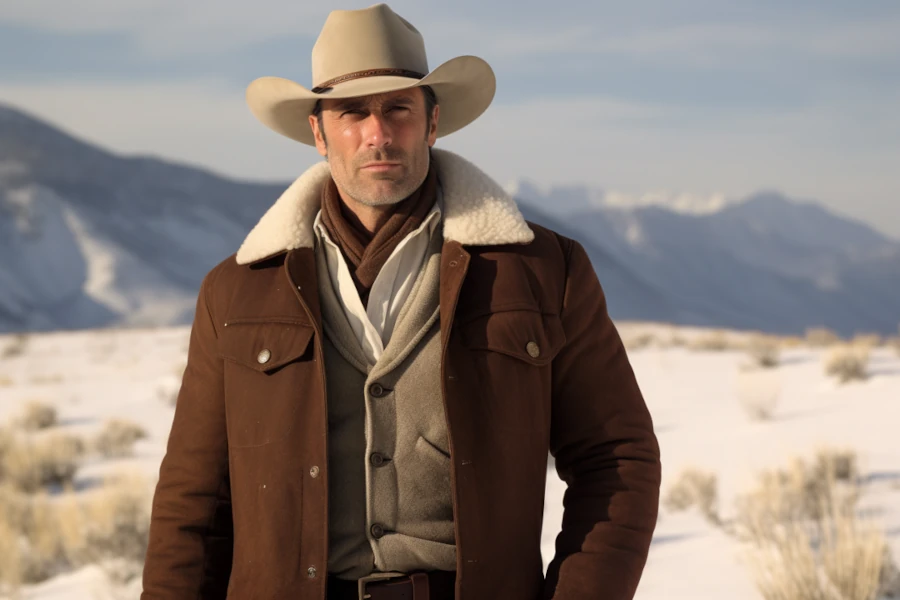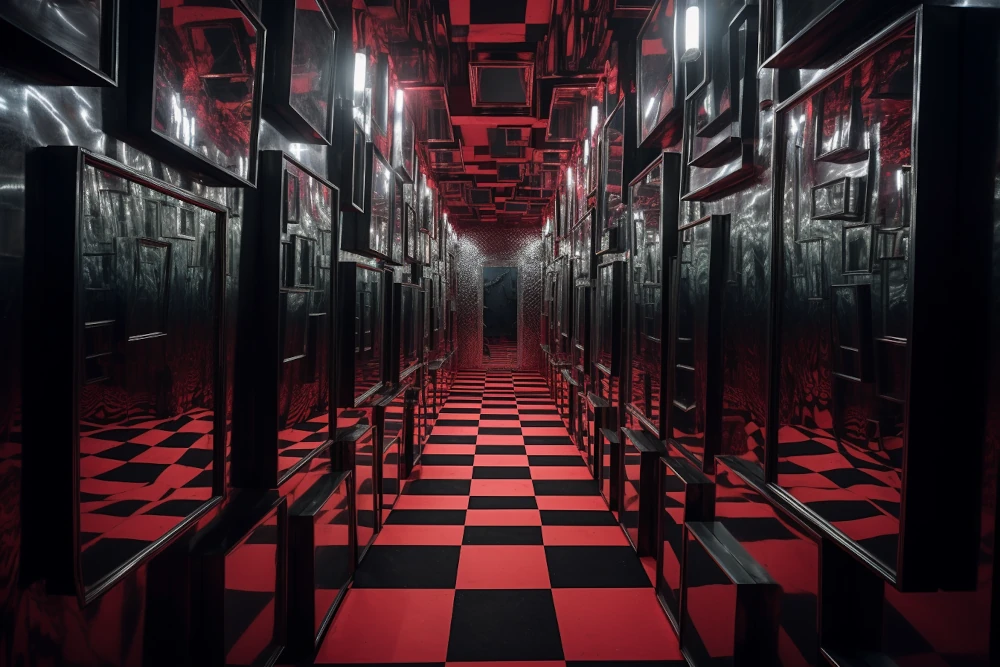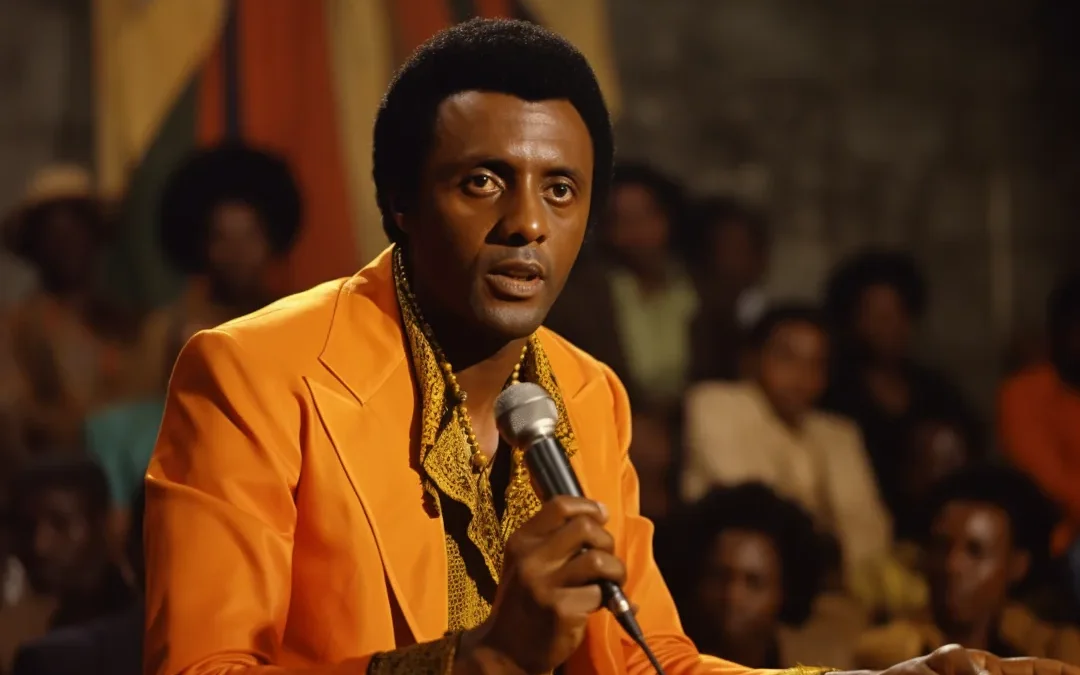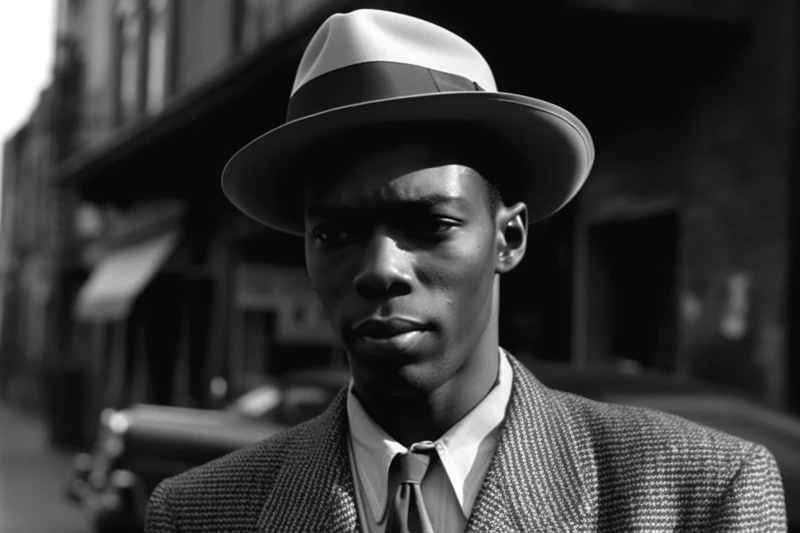- Fargo Season 1
- Fargo Season 2
- Fargo Season 3
- Fargo Season 4
- Fargo Season 5
As the credits roll for season 4 of Fargo, an unnecessary scene pops up to spell out for the viewer how this season connects with the other three. Any astute viewer would have figured this out only a few episodes in, but apparently Noah Hawley thinks his viewers are stupid. The amateurish writing and directing of Fargo are so incommensurate with the cinematography, acting, and even score that the experience leaves you confused. Hawley must be a master of the pitch.
Unlike previous seasons, we now get unreliable acting to match the reams of plot holes and narrative confusion. While most of the performances meet the high standards of earlier seasons, Chris Rock is miscast as a gang boss in 1950. With decent dialogue, he may have been able to pull it off, but Rock lacks the range to convince an audience to take silly lines seriously. His adversary, played by Jason Schwartzman, faces a similar problem. These clowns couldn’t run criminal enterprises.
Synopsis
Season 4 begins with a history of organized crime in Kansas City, which all seems to occur in front of a single establishment. First, Jews ran organized crime, but then the Irish came to challenge their rule. The two sides strike a deal, trading sons as collateral. But the Irish use their son as a plant to open the backdoor of the almighty establishment and come in with guns a-blazing.
Now the Irish control the almighty establishment that represents organized crime in Kansas City. But then the Italians come to town. The Irish, unable to learn from their own history, secure a deal with the Italians and they trade sons as collateral. For some reason the Irish son helps the Italians in the backdoor of the almighty establishment to gun down his family.
Now that the Italians control the almighty establishment, they soon find opposition from a black gang led by Loy Cannon (Chris Rock). Our story has begun in earnest at this point, in 1950. Once again sons are traded, but this time things get more complicated than a simple backdoor sneak.
A Gambit Pileup occurs involving a multiracial family that owns a funeral home, a murderous nurse who lives across the street, a couple of lesbian outlaws, a crooked cop and his new Mormon partner, and the aforementioned gangs.
Character vs. Caricature (again)
As with previous seasons, Hawley seems unable to shape real characters and instead utilizes caricatures. The black characters, interestingly enough, all have more depth than the Italians. The black gangsters are clearly inspired by modern day black Americans while the Italians are all pulled from various mob movies.
Many Americans are unaware that all of the minorities who represented these Kansas City gangs were, at one point, highly discriminated against. Fargo makes a point of this with on-the-nose dialogue, which has become one of the most cringe-worthy parts of the show. The showrunners often highlight the discrimination against Italians and African Americans alike, but only the latter appear to internalize and struggle with it.
At one point a doctor at a private hospital turns down a bleeding Italian boss, which ultimately leads to his death. The son, Josto (Jason Schwartzman), responds with anger and makes a point of exacting revenge. As an incompetent hothead, Josto never appears bothered by his pariah status and stubbornly responds to any discrimination with anger and violence.
On the other hand we have Loy Cannon, who never misses an opportunity to dive into a soliloquy about being black in America. Chris Rock is like a time traveler in this show. He talks like Chris Rock, he tries to become wealthy using some innovations that are just around the corner (the white man steals it from him, of course), and he speaks and behaves like a man who has seen a post-Civil Rights era America. So while the black characters have an emotional depth the Italians lack, it’s so over-done and cliche they become just a soppy form of caricature.
Oddly enough, in the pursuit of analyzing historical race issues, Fargo does far more harm than good. For example, Ethelrida Pearl Smutny (E’mryi Crutchfield), the daughter of a funeral home director, has an uncanny intelligence for her age that defies her environment. This teenager is more intelligent than any character in the show and gets beaten every day in school for it. There is no subtly, no grace, no realism to such a character. No subject lies beyond her expertise. Kids that smart are weird and on the spectrum, but Ethelrida also has a social prowess (except with her teachers) exceeding any character in the show. Showing the potential of black women that has too often been suppressed by society is a good thing. You don’t show that by creating some inhumanly perfect person.
The showrunners deem the Italian women unworthy of the humanization they exaggerate in the black women. Italian women appear when tears or their deaths are required. The black women, on the other hand, actually participate in the story. In a weird way, Hawley goes out of his way (in vain) to humanize the black characters while he dehumanizes the Italians. How could this have escaped anyone’s notice in production?
In Fargo, everyone needs to die
Sorry if that’s a spoiler. There are a few survivors at the end of season 4, but you could probably guess who they will be by the end of episode 1.
The weird part about a show deciding that everyone should die is when they begin to die in weird and arbitrary ways. Strange accidents. Natural disasters. A revenge killing we’re just waiting to see happen.
Other than Ethelrida, who remains on the fringe of all this violence, the protagonists never become tethered to any real stakes. Perhaps Loy Cannon attempts to occupy this role, but it’s hard to feel sorry for the guy who initiates violence in the pursuit of progressing from rich to wealthy. Rabbi Milligan (Ben Wishaw) has the potential for an interesting character but he plays a single note. He takes care of Cannon’s son, Satchel (Rodney L. Jones III), but we know what happens to him the moment Milligan starts acting paternal (see season 2).
In previous seasons, as in the film, the cops acted as our primary protagonists. Season 4 mixes things up a bit with a dirty cop named Odis (Jack Huston) with an anxiety disorder and a Mormon U.S. Marshal named “Deafy” (Timothy Olyphant). Unlike the Minnesota nice cops of previous seasons, Deafy takes kindness and propriety to a Mormon extreme. As a reflection of his faith—which he constantly talks about—he is resolute in all things. This cardboard cutout Mormon provides nothing to root for, nothing to be concerned about. Like all the other caricatures, death stalks him and the audience has no reason to care.
The cops apparently didn’t do any policing in 1950 Kansas City.
The complete lack of legal repercussions for brazen acts of lawlessness has haunted the entire Fargo series. In season 4 the police only seem to exist to play the role of police officers.
Our dirty cop, Odis, can do whatever he wants. Other officers acknowledge he is on the take—some have a neutral attitude about this while others are bitter—but nothing is done about it. Odis also appears to be wholly unqualified for his job. A stint in the military appears to be his only experience and his post-traumatic stress disorder manifests as an obsessive compulsive disorder rendering him completely unable to react when faced with an emergency. The only actual police work comes at the behest of Deafy the Mormon U.S. Marshal. Naturally, the department prioritizes Deafy’s case to hasten his departure.
For a department that appears to have no interest in any form of actual policing, the cops are quick to mobilize for whatever Odis wants. Odis may get no respect, he may not be in a true position of power, but he he can flip from being a low-level grunt to the chief of police when the plot demands it. What does his boss want? Who know? The police exist to fill a role in the plot. Hawley can’t be bothered to concern himself with creating characters that make sense or have real motivations. He gave Odis PTSD and made Deafy a Mormon. Characterization complete!
Theme: violence begets violence
If anything positive can be said about Fargo, season 4, it’s that it has a coherent theme. Apparently, between season 2 and 3, Hawley learned about theme and became determined to implement it with all the subtly of a teenager. In season 3 this failed tremendously because abundant plot holes undermined the theme. In season 4, the theme just isn’t that interesting.
Basically, we get the theme of 90% of gangster movies. Violence begets violence. This is a sort of theme for dummies because all it requires is to start with a violent act and then show retaliations bounce back and forth like ping pong balls. Sometimes writers can bring an interesting spin on this. For example, in Batman Begins and The Dark Knight, Christopher Nolan toys with the idea that aggressive policing (tough on crime) can actually make crime worse by escalating violence. In The Godfather, we see how criminal violence fails to act as a springboard to better things as future generations inherit the baggage of violence along with the wealth it acquired.
Unlike The Godfather, Fargo has no idea what it wants to say on this subject. Clearly The Godfather acted as an inspiration, but what are we supposed to learn from Mike Milligan? That crime can sometimes pay? I don’t know, and I suspect that the Fargo writers don’t know, either. Too often the violent and sad are mistaken for the profound. Like with previous seasons, if you watch this one on mute you’ll think you’re watching a damn good show. Fargo is like a gorgeous date without an interesting thought in her head. It really looks the part. But listen to the dialogue and you will be stunned by the vapidity.








